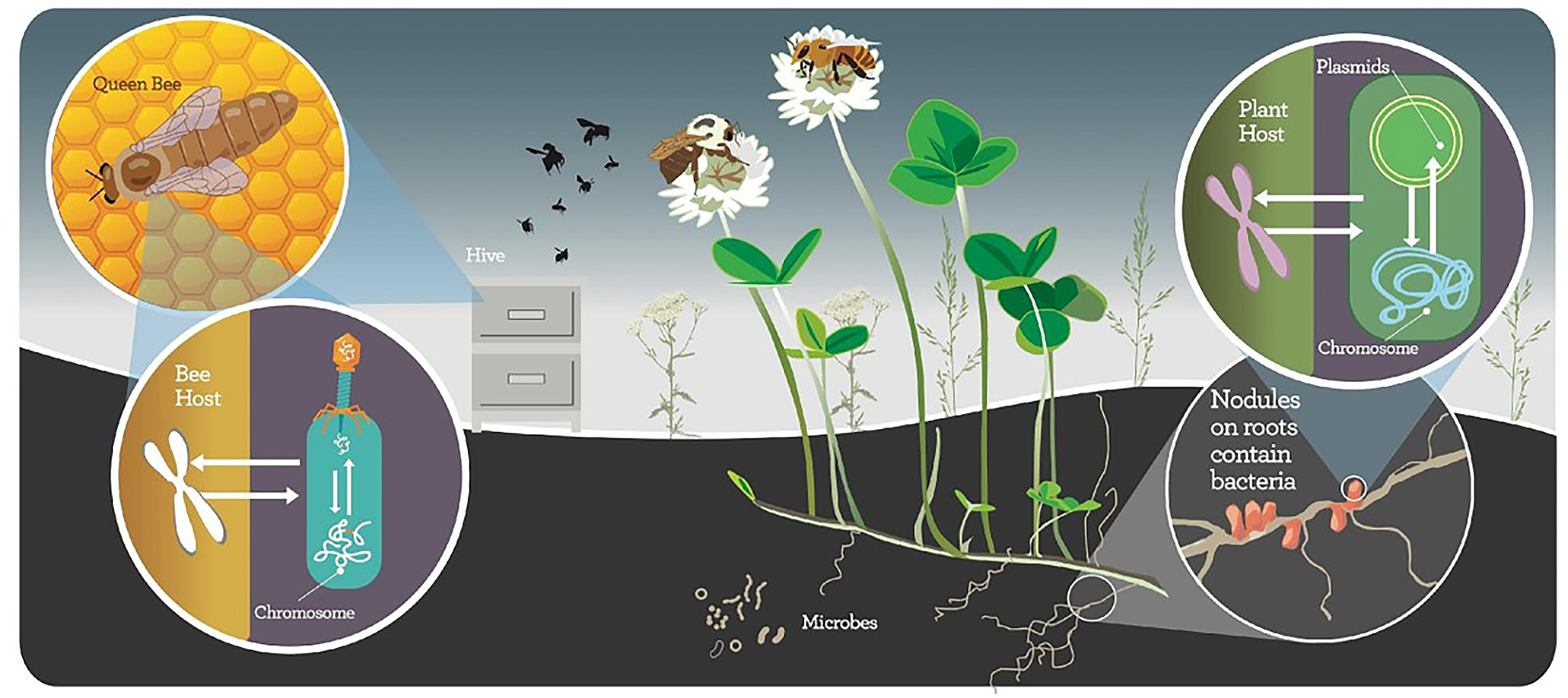Genomics and Eco-evolution of Multi-scale Symbioses (GEMS)
Humans, and the animals and plants around them, live in a microbial world. It is now well-known that microbes and viruses infect, interact and move through the genomes of every organism on Earth. Relationships among organisms, and with their microbes, can dramatically change the traits, behaviors, and functions of the host plant or animal. Sometimes these interactions are beneficial and sometimes they can be detrimental by causing disease. Many influence host function and can have hidden but important global scale impacts, driving the rates of responses to climate change, health and disease, antibiotic resistance, and more. Understanding how nested interactions within the microbial world occur and influence our ecosystems is critical to controlling their impact.
The Genomics and Eco-evolution of Multi-Scale Symbioses (GEMS) Institute, a Biology Integration Institute funded by the National Science Foundation, focuses on the classical species interaction between clover and honey bee pollinators as a model to understand the impact and dynamics of the myriad of microbes nested within them. The project takes an integrative approach to understand how molecular interactions impact the ecosystem. As a $20 billion US industry, the outcomes of the project studying clover/honey bee nested genomes has practical value as well as being a model for addressing fundamental questions in integrative biology. The researchers in GEMS are collaborative, diverse, interactive scientists and educators who take an inter-disciplinary approach to answer critical questions about how nested genomes interact and affect the world. The project uses a shared leadership model with co-mentorship between trainer and trainee and multisite educational activities. The established institute is designed to integrate biological disciplines to understand how nested genomes respond to environmental change.

GEMS will address the fundamental biological question, How do symbioses unify biology, from molecule to ecosystem? The goal of this project is to establish a framework for how the phenotypic variation generated by the mobility of nested symbionts influences the adaptability of traits and the strength and stability of species interactions. Ultimately, the Institute aims to understand how this variation impacts ecosystem responses to environmental change. The Institute is grounded in the canonical symbiosis between flowering plants and insect pollinators (clover and honey bees), expanding to include interactions nested in their microbial world. The research leverages the extensive knowledge in multiple nested interactions (plant–pollinator, legume–rhizobium, honey bee–microbiome) to build connections within and across systems from the molecular processes that govern establishment of symbiosis and extend phenotypic traits to define how they interact and evolve together in the natural world. Data are integrated with ecological and evolutionary theory to generalize beyond the focal systems to build predictive models. Computer science, statistics, and mathematics expand both the range of biological questions asked and the impact of their answers. Along with the traditional academic silos dividing researchers into molecular and organismal units that prevent a unified view of biology are many others, such as those separating microbe from macrobe, plant from animal, student from faculty, education from research, and diversity, equity, and inclusion from science. Through K-12 education in Spanish and targeting excellence with Project Microbe and the Jim Holland program in three urban and rural communities in the Midwest, GEMS focuses on the intersecting goals of changing how biology is done and who does it, unifying biology by including the small but powerful so often overlooked.

